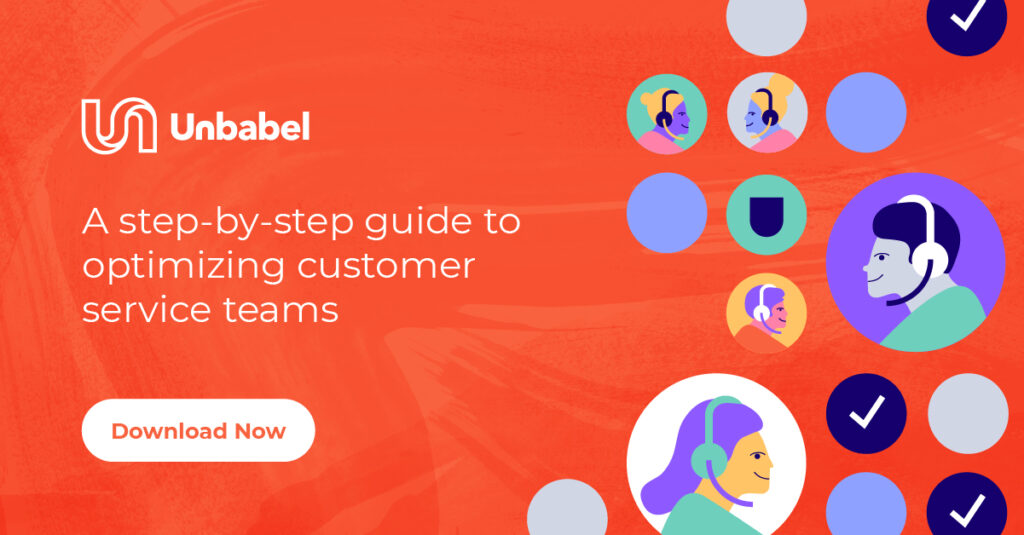Should you be working to improve your customer experience or optimize it? That might sound like a distinction without a big difference, but it’s not just semantics.
Martha Brooke of Interaction Metrics puts it this way, “Improvement is just too vague… optimization, on the other hand, is concrete and has a precise target. You know you’re optimized when you reach the point of diminishing returns.”
Advice out there on customer service often tries to apply a one-size-fits-all approach. But, as you know, each organization’s customer team is different by design and on purpose. So the goal isn’t to figure out what other businesses are doing and copy it, but to take ideas from successful CS organizations and figure out how to best apply them to optimize your unique situation.
Most businesses like yours have some mix of internal and external customer service teams, the latter often facilitated by partnerships with BPOs. To that end, let’s take a look at some proven strategies for optimizing different types of customer service teams.
3 Strategies To Optimize Customer Service “SWAT” Teams
Many businesses have a high-quality, well-trained internal customer service team. Some call this a “SWAT team.” As you know, this team should be focused on handling the highest-priority and most complex cases. This could include angry customers or those with highly technical or specific needs. Here are some strategies to optimize this team:
1. Explore “Tier 2” Locations
One of the interesting strategies we are seeing out there today is locating SWAT teams in “tier 2” cities. These are cities like Dublin, Amsterdam, and Salt Lake City that are chock-full of high quality talent but may offer lower labor costs due to the cost of living and other factors. Remote internal teams may be another way to achieve this—offering employees flexibility while improving margins.
2. Turn Them into Beta Testers
Another strategy is to turn this team into “beta testers.” Since these tend to be high-performing team members, they can try out new customer service technologies, experiment with cutting-edge tactics, and evaluate results before rolling anything out to other teams. Tools and strategies they beta test can be spread to other teams once you know they work.
3. Hire for Passion
One final approach we are seeing more and more is to hire agents who have an inherent passion for the products and services they’re supporting. Music companies are hiring musicians and music lovers; travel companies are hiring people with wanderlust; and gaming companies are hiring seasoned players. Hiring and promoting people who have a natural passion in common with your customers will show through in everything they do.
3 Ideas for Customer Service “Scale” Teams
There’s also the outsourced customer service team, which can include offshore, nearshore, or onshore call centers. As you know, these teams are often managed by a BPO and handle the vast majority—60 to 90% on average—of requests from customers. They focus on less urgent and less complex queries. But this doesn’t mean it isn’t worth optimizing them. Here are some strategies that work for many businesses:
1. Pick the Right Partner
We partner with several BPOs who are experts at helping businesses deploy large outsourced teams. If you are choosing a BPO or reconsidering your choice, we recommend partnering with tech-forward BPOs who have a perspective on the future of customer service. If you really want to pressure-test the relationship, ask them if they are willing to sacrifice their own short-term revenue in order to benefit your long-term outcomes.
2. Consider DIY
Some companies choose to build “scale” locations that remain owned and managed by the organization. For example, one company we know of opened a large secondary customer service center in Morocco to service French- and English-speaking customers. This team is low-cost, and they are able to hire fast in this location. If you are able to hire at the scale needed and can find an ideal location, this can be a very smart strategy.
3. Explore New Locations
Multilingual customer service can dramatically improve customer experience KPIs, which is why outsourced teams often are where they are. Historically, multilingual customer service centers have been located in places like Cairo, Lisbon, and Athens. However, with the advent of machine translation, teams of any size in any location can provide comprehensive multilingual coverage. When exploring BPOs (or even considering where to locate an owned call center), keep your mind open to places like the Philippines and India. These countries have massive English-language operations, but can now easily handle multilingual customer service using machine translation technology.
The dollar value of optimization
As Martha Brooke puts it, “Investing in optimization makes sense… If you’re already spending on costly staff along with software… you want to know that you’re using these resources wisely.” She offers this rule of thumb: “To ensure that the resources you have in place are being used for your company’s and customers’ greatest gain, invest 1 to 3 pennies on the dollar. For instance, if your tech support budget is $4,000,000 per year, add $40K to $120k per year to optimize.” She considers a team optimized when their interactions score at least 91 and customers rate their experiences 85 or above.
Ultimately, the goal of optimization is to be a best-in-class brand that treats customers with empathy. This should result in measurable improvements to your bottom line and your customer satisfaction metrics. The strategies outlined in this post are just a few ways that top brands are optimizing their customer service teams. My hope is at least one of them resonates or sparks a new idea for you to take to your own organization.












